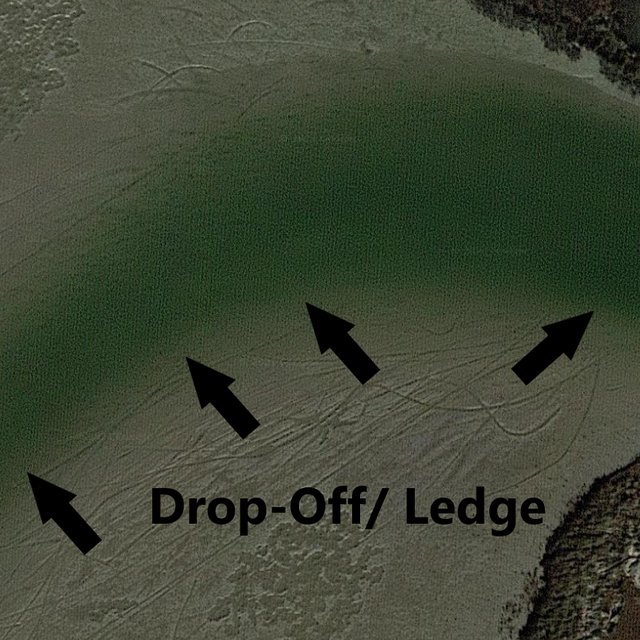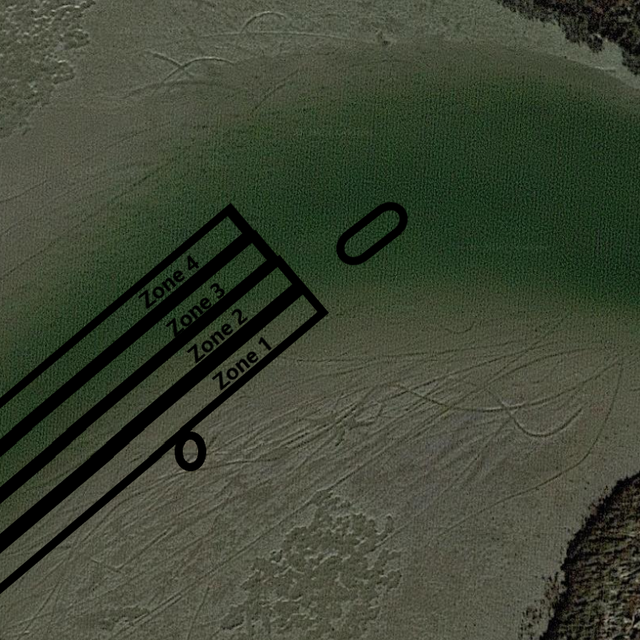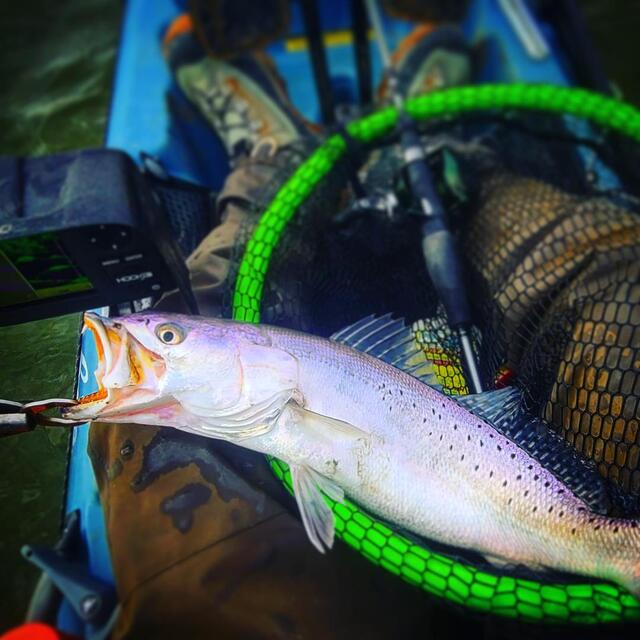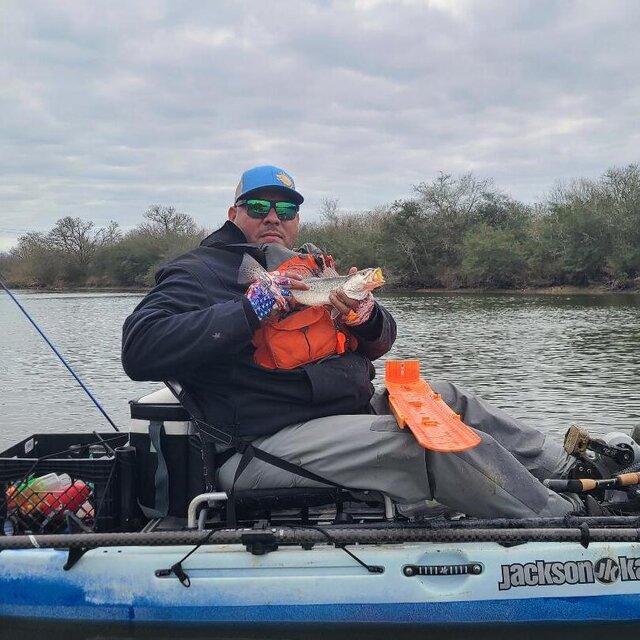My last blog was on winter fishing in Galveston and what structures to target. A common question that came up was how to fish drop-offs and ledges effectively for speckled trout, redfish, or flounder. There are days when fish will be all over these areas and it seems like you can do no wrong. Then there will be days when fish will be stack up on a certain depth, location, or even structure, making finding them that much more difficult. Here’s my strategy that I follow to maximize my time on the water and locate these fish.
What is a Drop Off or Ledge?

Our first task is to locate a drop-off or ledge. Google Maps is always your friend in helping find these areas. I would also highly recommend utilizing a depth finder when you arrive at your location to carefully pinpoint where the drop-off is located and to help you figure out the depth. When working in these areas, I really like to take note of various factors including water temperature, depth, and any markings or structure that I can find.
Essentially, a drop-off or a ledge is a distinct change in depth. However, you’ll have to compare the change in depth to the surrounding area. For example, if you are in a shallow flat that is 2 ft deep for hundreds of yards, then it drops to 2.5 ft, which is significant. But, if that same flat fluctuates between 1.5 ft to 2.4 ft, then 2.5 ft is not as significant. The same goes for even deeper water. If you are looking at a 10 ft deep channel, having it drop to 11 ft is something to take note of, but not as significant compared to 10 ft changing to 15 ft or more.
How to Fish Drop Offs and Ledges

Now that you have located the drop-off or ledge, next is how to fish it. There are basically two ways to fish these types of areas. One is to cast across it and work your bait back. The other is to work parallel to the drop-off and ledge. Personally, I prefer working parallel to it, but we’ll go through both methods as they each have their merits. Also, I further break down a drop-off or ledge by splitting it into 4 zones.
Zone 1
This is right before the drop-off. Throughout the year, fish will come up off the drop-off and chase baitfish. When wading, this is one of the easier zones to work, as you can use the drop-off as a point of reference and work parallel to it. If the fish are shallow at this point, you’ll be able to pick them off and continue covering ground.
Zone 2
Zone 2 is the drop-off itself. Whether the fish are transitioning between other zones or actively feeding here, this is usually the first zone that I target on drop-offs and ledges. As the water drops deeper, fish will stage up here as it is a great area to find forage such as baitfish and crustaceans. When wading, always be aware of how much it drops before wading around this zone. In some areas, the drop is slow and gradual. In others, it can be a sheer cliff. Watch out!
Zone 3
As for Zone 3, this is where the drop stops and it flattens out. That sudden stop where it stops dropping is another area that fish may congregate. This zone is especially difficult when wading as you won’t really know where it is. It is best to work this area via boat or kayak.
Zone 4
This makes up the majority of the drop-off or ledge. After Zone 3, I consider the rest of it Zone 4. When it gets cold during the winter, or hot during the summer, fish will find the deeper waters to hang out. From here, they can move up and down the zones as they need. Again, this is best worked via a kayak or boat.
Working Across the Zone
Casting across the drop-off or ledge is a great method if you are stationary and there is a bit of current moving through the area. Utilizing the current, you can work your bait across both deep and shallow areas as you hone in on feeding fish. Be sure to fan cast so that you can work as much area as possible. Another tactic that I like to do is cast up current and allow my bait to essentially swim down current. This is especially effective when wading where you can fish multiple zones up current and use it to your advantage. I especially like to use suspending twitch baits in these situations, perfectly mimicking forage that is struggling in the current and making an easy target for predators. The downside to this is that you’ll only work each zone for a short period of time. I believe that fish will relate to one of the four zones detailed above. If fish are relating to a specific zone, your bait may not be in the zone long enough for fish to find it.
Working Parallel in the Zone

My favorite and preferred method is to work parallel to the ledge or zone. This is an especially useful method when you can cover a lot of ground such as in a kayak or boat. You can also work parallel while wading, but there are some limitations based on the lack of mobility you have. For me, working parallel to a ledge is all about mobility. The reason being is that I firmly believe that fish will always position themselves of drop-offs and ledges in virtually every area you fish. No matter if you are fishing here in Galveston, or over in Florida, fish will always be around these types of environments. However, the fish may be right on the ledge or 50 yds off of it. By positioning yourself and working parallel to the edge, you’ll be in a prime position to stay in the correct zone. By using your mobility to work up shallow, the actual ledge, or even way off of it, you can find the pattern and hone in on them.
Hopefully, you now have a better idea of how to fish drop-offs and ledges. By keeping in mind how the layout of the water is, you’ll be able to effectively fish the water columns and find the feeding fish. Want a fishing question answered? Look through my blog or send me a message! Hopefully, it will get answered in a future post. Also, be sure to join me on my first podcast called One Last Cast Podcast! Fellow angler and guide Merriel Solesky and I will be discussing Post-Freeze Fishing on the Texas Coast. Hope you’ll tune in!


